Columbus hopes this map can connect residents with hundreds of parcels of abandoned land
For decades, hundreds of tax-delinquent, abandoned homes and parcels of land in Columbus have sat idle, bringing down neighborhood values and wasting living or growing space.
But this month, the city rolled out a new system to find land and properties on a map, and then acquire and transform them for a few thousand dollars.
The new process creates an opportunity for land and neighborhood enrichment. It also could means a financial boost for Columbus as properties come back on the tax rolls.
Previous land bank acquisition has created affordable housing and urban farms, both vital for Columbus to become a healthier, equitable, safer, and more climate-resilient city. But, there have only been a few success stories out of several hundred land bank parcels.
When Natalie Bouyett started her position in April this year as the real estate specialist for the Columbus Land Bank Authority, she settled on a new approach to let people know about the property acquisition opportunity.
“Historically we wanted people to find them. Now we’re like, here they are,” Bouyett told the L-E. “This was a good opportunity for us to clear inventory and start a new approach. We needed a disposition strategy.”
The City Land Bank Authority is hosting a public workshop that will give a detailed look at the process of developing property purchased through the Land Bank Authority on Nov. 1 from 3-5 p.m. at Columbus Public Library at 3000 Macon Road.
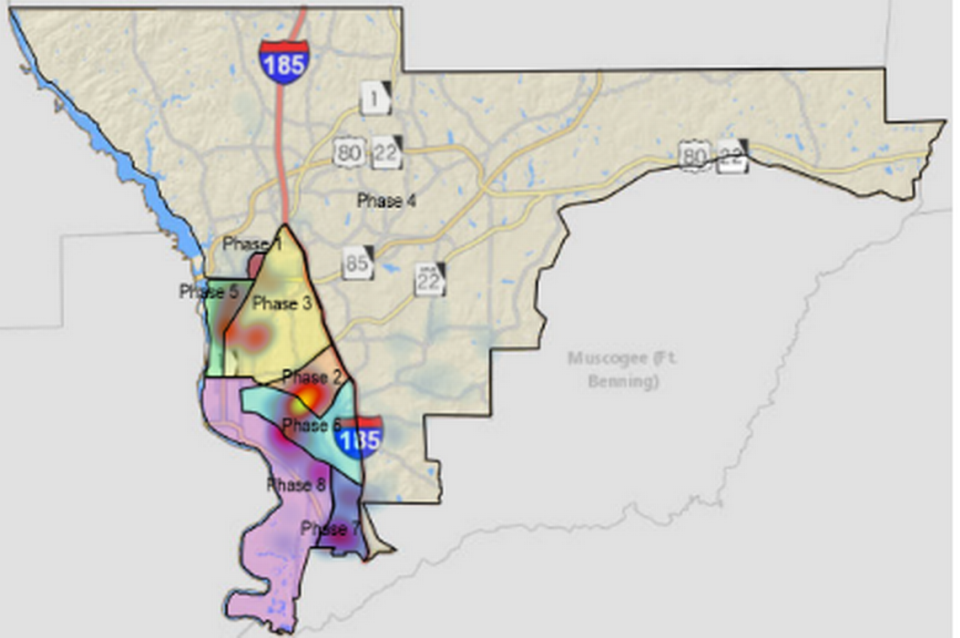
What is a land bank?
There are 17 states in the U.S. that have land banks — a unique branch within the city government that has a charter declaring it can acquire property if it is tax delinquent (for Columbus it’s at least a year). These are properties that would otherwise be foreclosed. The city can extinguish the back taxes and clear the title.
Land banks are acquired through a bidding process. These aren’t for sale until after they go through the tax commissioner’s tax sale. The city receives assets both from the bid and the ongoing property taxes. A land bank has the authority to do away with the liens on the property and then sell it at a fraction of the cost.
“The land bank has a lot of potential to turn around dangerous areas and create something helpful and enjoyable for the community,” Bouyett said.
Though Columbus’ land bank is the second oldest in Georgia, established in 1992, momentum for managing the process didn’t build until 2012, when the city gave money to pay for foreclosures. In 2017 and 2018 there was a renewed approach with the help of Center for Community Progress, a nonprofit that provides assistance to land banks across the country.
“Land banks are designed to be thoughtful,” Sara Toering, from the Center for Community Progress said. “Land banks are able to transfer or sell property for not necessarily the highest price but for the highest community good. Land bank superpower is being in the midst of that process and doing the thoughtful disposition of land.”
Experts suggest the current highest community good is affordable housing in Columbus.
“We’re in an affordable housing crisis,” Cathy Williams, president and CEO of NeighborWorks Columbus, said. “There is no inventory out here, so if you see something that’s burned that could be replaced and updated, it’s a great opportunity [for affordable housing].”
Abandoned, burned, dilapidated homes pull down the value of the neighborhood.
“It’s not providing income for the city,” Williams said. “It’s an eyesore. It’s all negative.”
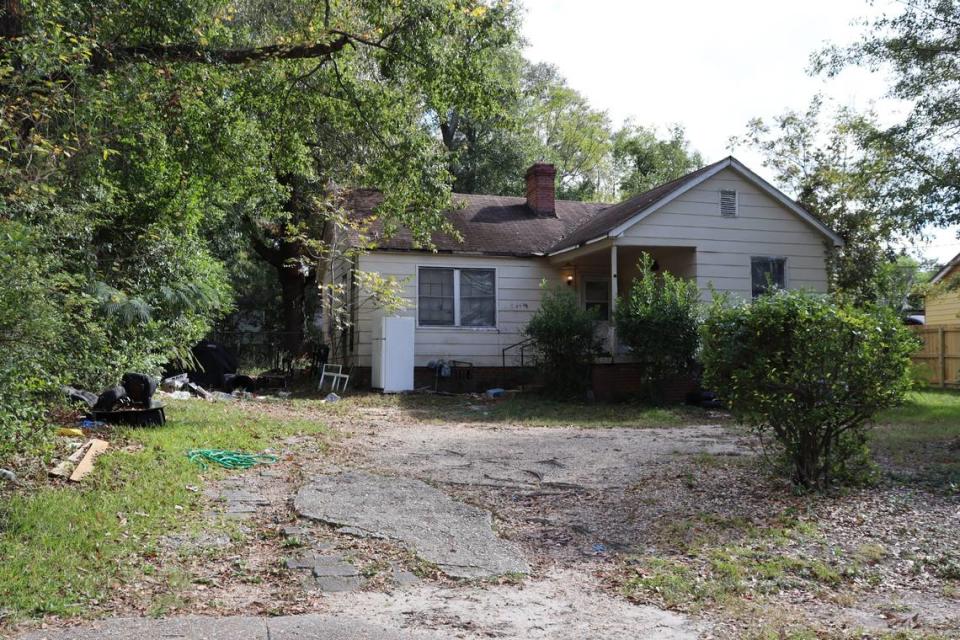
A new process – gauging interest
In the past, groups such as NeighborWorks would notify the land bank to add it to their inventory of properties qualified for foreclosure. Or, a citizen would inform the city of a property that was abandoned for years.
Bouyett’s new disposition strategy included an interactive map of properties qualified for foreclosure that are at least five years tax delinquent. There are 343.
She created a heat map showing the high concentrations of areas with property or land parcels. Each site has a photo of the area, the starting bid, the zone type and its acreage. Bouyett created eight sections (phases) within Columbus to have more of a neighborhood enrichment approach, with less scattered sites.
“That’s what this phase plan is all about. It’s gaining interest,” she said.
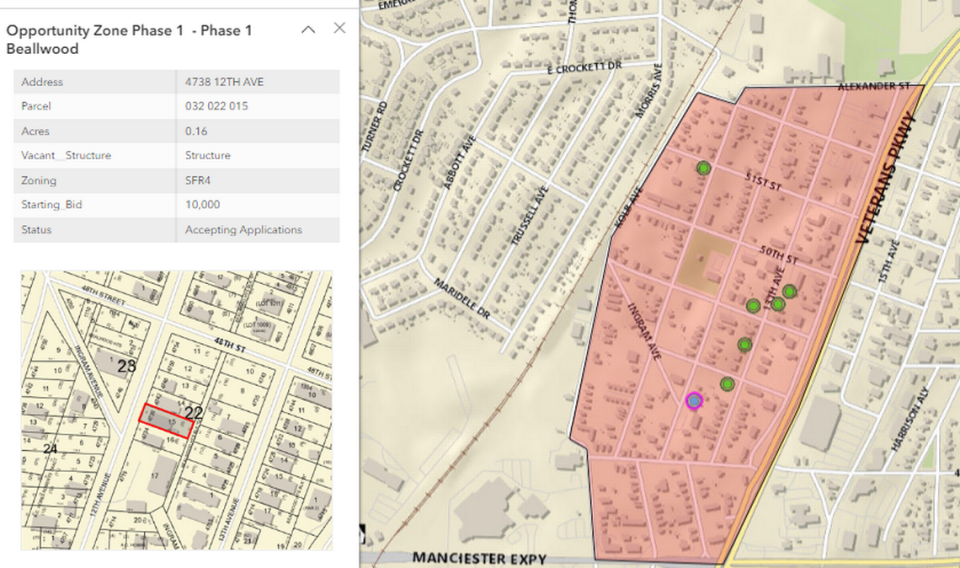
Phase one is a small parcel, in the Belwood neighborhood, showing just seven properties of the 343.
Phase two is behind the Macon Road Library near Carver High School. This has 48 properties, with 14 that have structures on them. The rest are all vacant land.
“One of the properties we’ve had for 10 years and didn’t have a disposition strategy, and the land bank lost money because of the maintenance cost,” Bouyett told the L-E.
A property at 4738 12th Ave. in phase one has been delinquent on taxes since 2014, totaling $8,327.20. It previously had a had a structure that was demolished by the city, costing nearly $32,000. The bid for this lot is $10,000.
The same bid price is true for the land parcel in phase two at 2734 Mimosa St. The .12 acre of land with a structure has also not paid taxes since 2014 with a total of $11,465.25 of delinquent taxes.
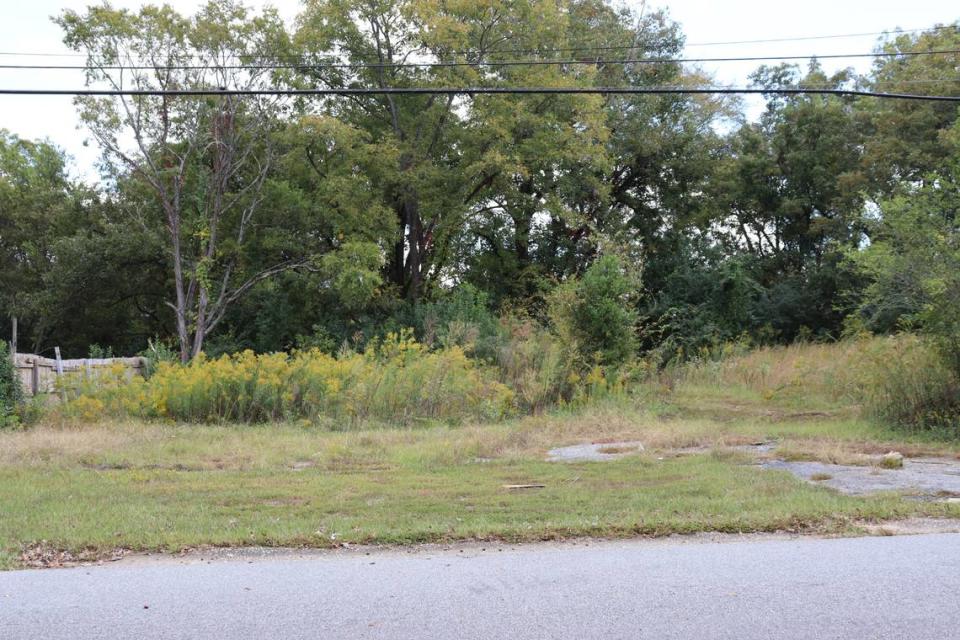
The vacant land parcels start at around $6,500. The cost to pay a closing attorney is $5,000 and maintaining the land (via trimming trees, and maintaining the lawn) for 60 days while it is in a right of redemption period.
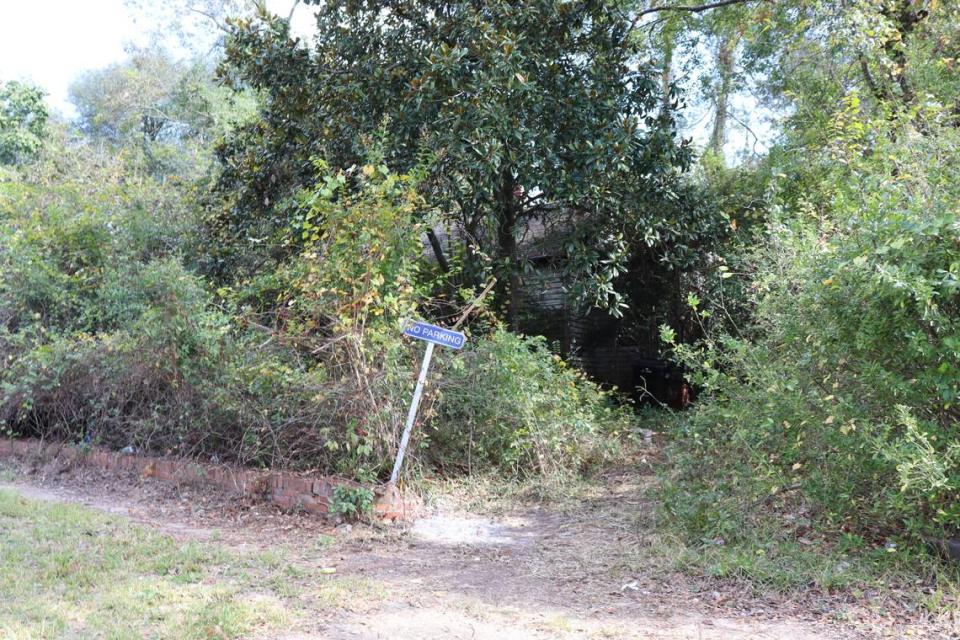
With this new process, the applicant has to write out what they plan to do with the land. The Land Bank Board makes the decision of who gets the land based on the project plan.
This can even be the case if another bid is competing for the same property and is higher. If the project plan isn’t clear or equitable for the neighborhood or benefiting the community, the land bank can choose the lower bid.
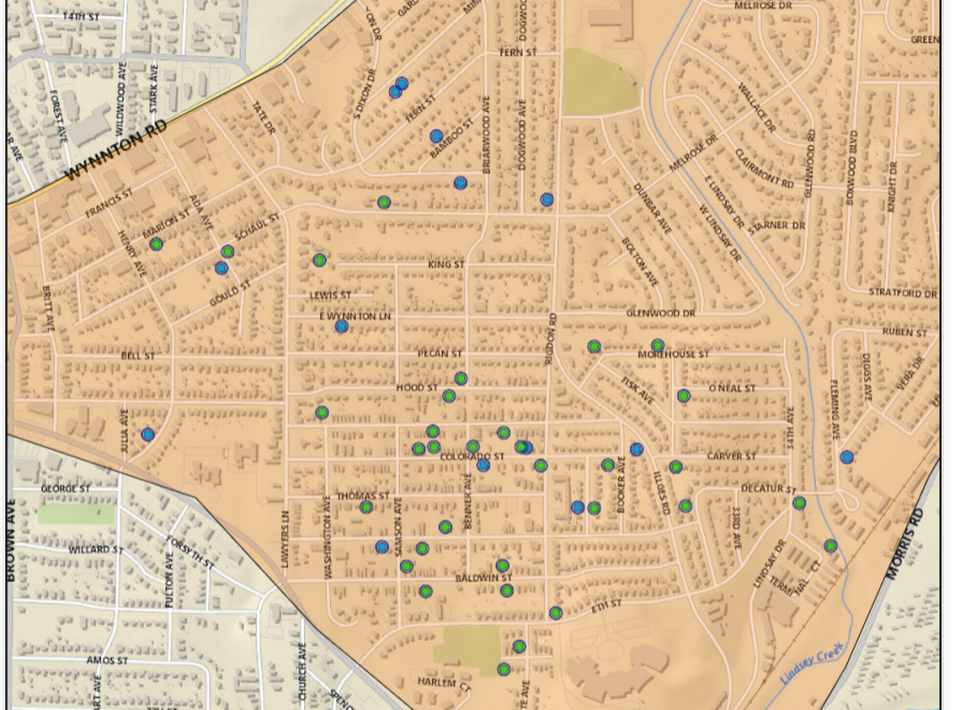
Neighborhood transformation and climate resiliency
Urban farmer Abike Alexander received her land adjacent to her house thanks to a land bank pilot program launched in 2019 by the city’s real estate specialist at the time.
Brad and Jenn Collins also used the land bank in 2019 to start their Dew Point farm. In addition to using vacant land to grow food, Alexander suggests making sure the current neighborhood residents are included in the process of what the land should be is critical.
“I’d love to have tons of urban gardens, tiny homes, garden spaces, hydroponic spaces, parks — all of this is important for a greener future, but that’s not the only thing that we should aim for,” Alexander said. “ Ask the neighbors: what does green space mean to you? How can we better this neighborhood as far as greening our city?”
Thaddeus Pawlowski, University of Columbia’s director of the Climate School’s Center for Resilient Cities and Landscapes, teaches urban planning and design. He forewarns that the city and planners be transparent, and think of long-term use to avoid repeating mistakes from the past.
“It’s important to listen to what people in the neighborhood say what that land could be,” Pawloski said. “Building a transparent process between the government and community and addressing what went wrong in the past is key at this point. Think holistically about the long-term future of a place. Our issue today is affordable housing. But what will be further in the future?”
Future issues that climate experts point to are more intense and frequent storms, drought, and extreme temperatures, affecting food security among other vital societal needs. Climate change threatens livelihoods through storms from improper flood management.
Pawloski suggests applying multiple climate solutions with this type of new process opportunity.
“When it comes to climate resilience it’s never a single thing,” Pawlowski said. “A mix of strategies that help to heal the community from the trauma it has experienced. The land can contribute to sustainable equitable growth and affordable housing.”
As an example, Pawloski suggested managing stormwater and “using the land as water capacity storage.”

